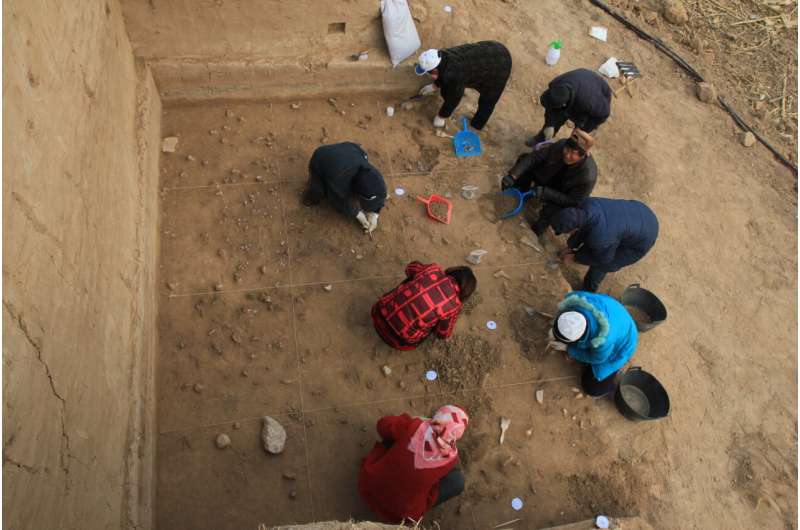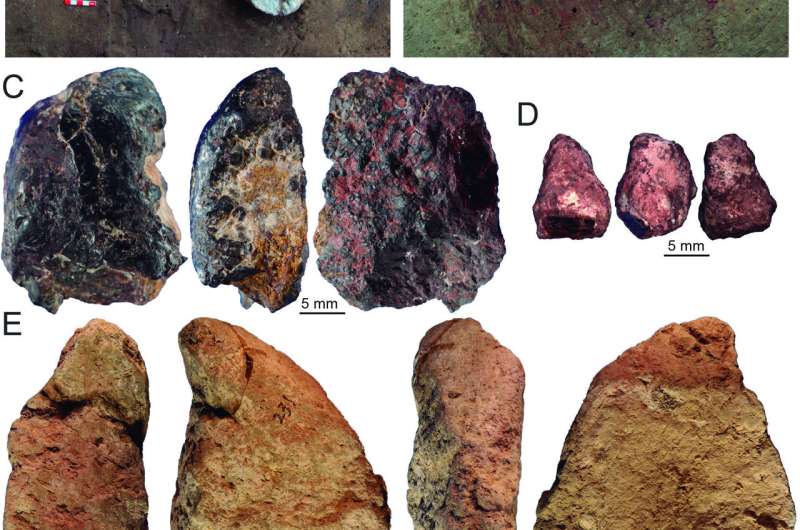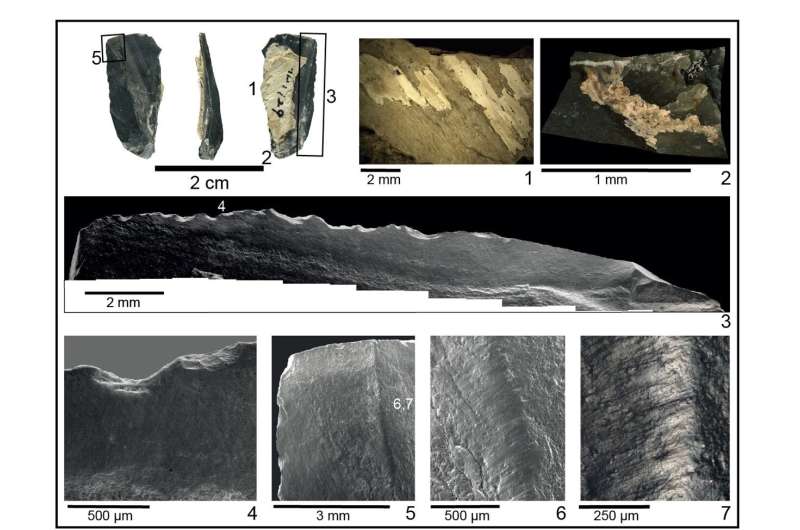
When did populations of Homo sapiens first arrive in China and what happened to the Denisovans and Neanderthals? A new study in Nature shows a glimpse into hunter-gatherer lifestyles 40,000 years ago. The Nihewan Basin of northern China has been the site of archaeological excavations that have revealed innovative behaviors and unique toolkits.
The discovery of a new culture suggests a period of genetic and cultural hybridization in Eastern Asia. Although previous studies have established that Homo sapiens arrived in northern Asia about 40,000 years ago, much about the lives and cultural adaptation of these early peoples, and their possible interactions with archaic groups, remains unknown. The Nihewan Basin in northern China, with a wealth of archaeological sites ranging in age from 2 million to 10,000 years ago, is one of the best places to understand the evolution of cultural behavior in northeastern Asia.
An article in Nature describes a 40,000-year-old culture in the Nihewan Basin. The cultural expressions and features that are unique or exceedingly rare in northeastern Asia can be found in Xiamabei, with the earliest known evidence of ochre processing in Eastern Asia and a set of distinct blade-like stone tools. The analysis of the finds offers important new insights into cultural innovation during the expansion of Homo sapiens populations.
According to Dr. Fa-Gang Wang of the Hebei Provincial Institute of Cultural Relics and Archaeology, the site has a novel set of cultural characteristics at an early date.
There are cultural changes at Xiamabei.
The ability of hominins to live in northern latitudes, with cold and highly seasonal environments, was likely the result of the evolution of culture in the form of economic, social and symbolic adaptation.

The artifacts used to process large quantities of pigment are examples of the cultural features found at Xiamabei. The artifacts include two pieces of ochre with different mineral compositions and a limestone slab with smoothed areas that were stained with ochre. According to the analysis done by the University of Bordeaux, different types of ochre were brought to Xiamabei and processed through pounding and abrasion to produce powders of different color and consistency, the use of which stained the habitation floor. The earliest example of this practice in Eastern Asia is at Xiamabei.
The cultural adaptation of northern China 40,000 years ago was represented by the stone tools at Xiamabei. Microblades became the dominant technology for toolmaking in Eastern Asia about 29,000 years ago, but little is known about stone tool industries. More than half of the tools at Xiamabei are less than 20 millimeters in size, making them unique for the region. Seven of the stone tools had clear evidence of hafting to a handle, and the analysis of the tools suggests they were used for cutting soft animal matter. The inhabitants of the site made hafted and multi-purpose tools, which are indicative of a complex technical system for transforming raw materials not seen at older or slightly younger sites.
There is a history of innovation.
The Eastern Asia record shows that a variety of changes were taking place as humans entered the region 40,000 years ago. Modern human fossils at the contemporary site of Tianyuandong and the slightly younger sites of Salkhit and Zhoukoudian Upper Cave suggest that the visitors to Xiamabei were Homo sapiens. A varied lithic technology and the presence of some innovations, such as hafted tools and ochre processing, but not other innovations, such as formal bone tools or ornaments, may reflect an early colonization attempt by modern humans. Genetic and cultural exchanges with archaic groups, such as the Denisovans, may have been part of the colonization period.

The authors of the new paper argue that the archaeological record doesn't fit with the idea of continuous cultural innovation or a fully formed set of adaptations that enabled early humans to expand out of Africa and around the world. The authors argue that we should expect to find a mosaic of innovation patterns, with the spread of earlier innovations, the persistence of local traditions, and the local invention of new practices all taking place in a transitional phase.
The findings show that current evolutionary scenarios are too simple, and that modern humans and our culture emerged through repeated but differing episodes of genetic and social exchanges over large geographic areas.
More information: Shi-Xia Yang, Innovative ochre processing and tool use in China 40,000 years ago, Nature (2022). DOI: 10.1038/s41586-022-04445-2. www.nature.com/articles/s41586-022-04445-2 Journal information: Nature Citation: Archaeologists discover innovative 40,000-year-old culture in China (2022, March 2) retrieved 3 March 2022 from https://phys.org/news/2022-03-archaeologists-year-old-culture-china.html This document is subject to copyright. Apart from any fair dealing for the purpose of private study or research, no part may be reproduced without the written permission. The content is provided for information purposes only.